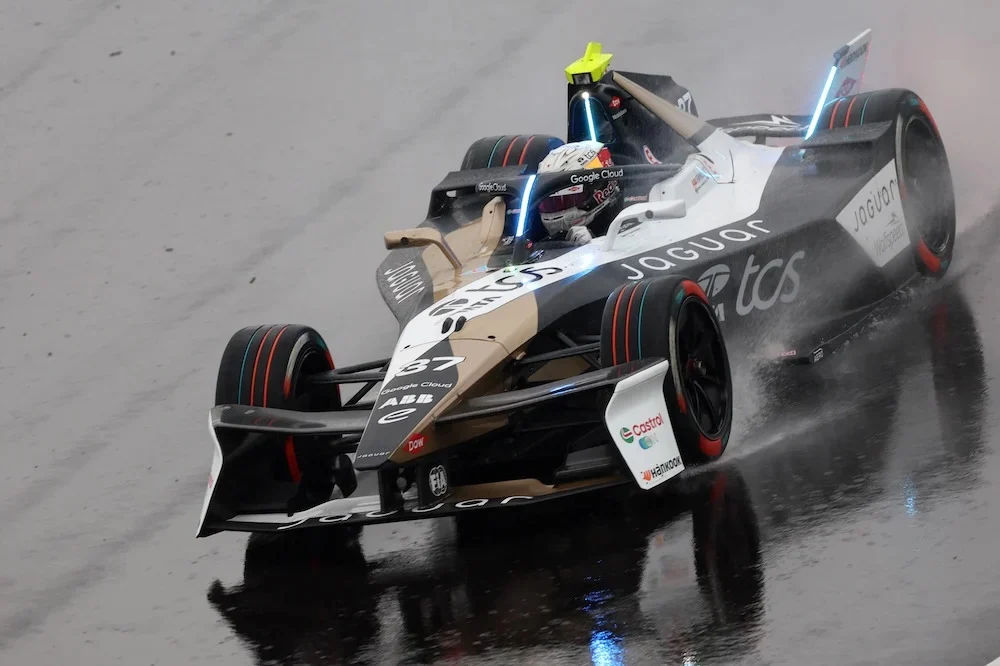Nissan’s Oliver Rowland made a remarkable start to the 2024-25 ABB Formula E World Championship by securing the fastest lap during opening practice for the São Paulo E-Prix.
The session which lasted for 40 minutes, was characterized by intense competition and strategic maneuvers as drivers familiarized themselves with the newly introduced GEN3 Evo machinery.
Oliver Rowland’s best lap time of 1:10.162 not only secured him the top position but also highlighted a significant advancement in performance compared to previous seasons, being a remarkable 2.627 seconds faster than the pole time recorded at last year’s São Paulo E-Prix event.
As the session began, drivers quickly took to the track to make their mark. Jaguar’s Nick Cassidy was among the first to set a representative time, followed closely by Lucas di Grassi and rookie Zane Maloney from Lola Yamaha ABT.
Di Grassi initially set a benchmark with a time of 1:13.951 but as the opening practice for São Paulo E-Prix progressed, drivers began to push their limits adjusting to the all-wheel-drive capabilities and enhanced grip provided by the Hankook tyres.
The new setup allowed for more aggressive driving styles, resulting in rapidly improving lap times.
Rowland’s teammate, Norman Nato, demonstrated strong form as well, finishing second with a time just 0.080 seconds behind Rowland. Nissan’s one-two finish underscored their competitive edge heading into the São Paulo E-Prix race weekend.
Jake Dennis from Andretti Racing also made a notable impression securing third place, 0.267 seconds off Rowland’s pace. His performance indicated the American outfit could be a formidable contender in the 2024-25 ABB Formula E World Championship.
Mahindra’s Edoardo Mortara rounded out the top four, showcasing the team’s anticipated progress this season. Mortara’s consistent lap times throughout the session suggested that Mahindra is poised to be more competitive compared to previous years.
NEOM McLaren’s Taylor Barnard made headlines by finishing fifth in his first full-time season in Formula E, completing an impressive total of 21 laps during the São Paulo E-Prix practice session—the leading driver in terms of laps covered.
Jaguar’s Mitch Evans faced some challenges during practice but managed to secure sixth place despite his car stopping with just two minutes remaining due to an undiagnosed issue. After the brief halt, he was able to resume and complete his final lap but could not improve his earlier time.
Evans’ teammate Robin Frijns finished just behind him in seventh place after showing early promise by briefly topping the timing sheets midway through the session.
The TAG Heuer Porsches had mixed results; Antonio Felix da Costa and reigning champion Pascal Wehrlein finished eighth and ninth respectively. Their performances indicated that while they are still competitive, they may need to refine their strategies for São Paulo E-Prix qualifying and race day to maximize their potential.
Nick Cassidy rounded out the top ten, having taken his first Attack Mode lap late in the session. His experience allowed him to navigate through some tricky moments including a few instances where drivers outbraked themselves at Turn 1 and had to take evasive action into runoff areas—an early indication of how challenging this street circuit can be.
Further down the order, Maserati MSG’s Jake Hughes placed eleventh followed closely by Nyck de Vries in another Mahindra entry and Maximilian Guenther from DS Penske. Meanwhile, Lucas di Grassi’s fellow driver Jean-Eric Vergne ended up sixteenth after struggling to find pace throughout practice.
Nico Mueller had a particularly challenging debut with Andretti at the São Paulo E-Prix after clipping the wall early on in the session, which resulted in minor suspension damage and limited his running time to just 13 laps.
Despite the setback, he managed to rejoin but could not significantly improve his position on the timesheets.
Overall, this opening practice session not only set the stage for an exciting race weekend but also provided valuable insights into team strategies and individual driver performance within this highly competitive environment.
As teams prepare for qualifying and race day on December 7th, all eyes will be on how they adapt their setups based on this initial data and how they will tackle the unique challenges presented by the São Paulo circuit.






